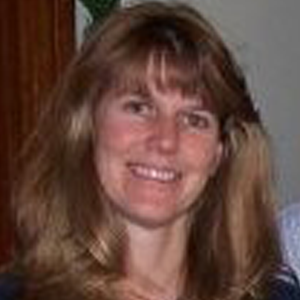

Smallsats are generating growing amounts of data, via their on-board payloads and in the course of their operation. Artificial Intelligence (AI) and Machine Learning (ML) are increasingly applicable to smallsats to extract information and optimize performance.
Earth observation and remote sensing applications provide dozens of examples of effective use of AI/ML, easily generating sufficiently large training data sets. Smallsats now provide imagery at different wavelengths, spatial resolutions and temporal frequency, and the combination of this imagery with other data streams is leading to new AI/ML uses for change detection and more.
Communications payload data processing and routing benefit from AI/ML as traffic is managed over agile distributed networks. Satellite services must now deliver cloud and intelligent edge applications, reliably and at scale, anywhere in the world, consistent with modern enterprise expectations. New thresholds of capacity and low-latency performance are a given, but just as critical are a range of agile networking capabilities along the principles of the cloud—dynamic bandwidth allocation to the end-user, one step away from the data center, flexibility to support on-demand, consumption-based business models and better visibility and control over network behavior.
AI and ML also apply to the physical operation of satellite fleets in a more automated way that allocates and accesses resources and identifies and resolves anomalies.
 Dr. Eric Anderson
Dr. Eric Anderson
Eric Anderson is President of And One Technologies and an angel investor in emerging space and IoT. He has contributed to dozens of space products, missions, and programs within small and large companies, government and academia. He currently supports technology and business aspects of several space, near-space, and air system developments with an emphasis on the delivery of data and services via new technologies, channels, and business models.
As Chief Technologist for Space at Moog, he helped lead the company’s space business and collaborated with worldwide colleagues on business strategy, technology and innovation across multiple markets. Eric was part of the leadership team at the nationally-recognized small company CSA Engineering, serving several years as President. He earned BS, MS and Ph.D. degrees in Aeronautics and Astronautics at MIT, was on the technical staff at Jet Propulsion Laboratory, worked at Sikorsky Aircraft and serves as board chair for the Kenya-focused non-profit The Kilgoris Project.
 Dr. Brian Barritt
Dr. Brian Barritt
Brian Barritt is a software engineer at Loon, a part of Google’s parent company, Alphabet. Dr. Barritt is one of the architects of the Loon network and leads the networking team
Dr. Barritt has more than 10 years of experience in advanced wireless networks. Prior to joining Google in 2014, he led engineering programs at Cisco and for NASA’s Space Communications and Navigation program.
Brian earned an MBA in Management of Technology & Innovation from the University of Minnesota and BS, MS, and Ph.D. degrees in Computer Engineering from Case Western Reserve University
 Marshall Culpepper
Marshall Culpepper
Marshall is a software engineer and technology entrepreneur with over 20 years of experience ranging from web to bare metal. His career has focused on commercializing open source software in industries as diverse as enterprise web, mobile, and NewSpace. Marshall’s software can be found everywhere from cloud data centers, mobile devices, to most recently, small satellites in low earth orbit.
 Marlu Oswald
Marlu Oswald
Marlu Oswald is President of Seed Innovations, a woman-owned small business. Under her leadership, Seed Innovations has developed systems capable of scaling to ingesting and processing more than 60 terabytes of streaming data daily. Seed Innovations has helped both commercial and government entities find, fuse, and use data to their advantage.
Marlu has a Masters of Science in Electrical Engineering and has dedicated her career to developing innovative systems that provide insight based on complex and multisource data.
 Jake Shermeyer
Jake Shermeyer
Jake is a researcher and geographer specializing in geospatial machine learning and computer vision. His research with satellite imagery focuses on time series analysis, super-resolution, and object detection with overhead imagery. Jake also is leading SpaceNet 6, a sensor fusion challenge featuring both synthetic aperture radar and electro-optical remote sensing data for foundational mapping.
 Rich Waterman
Rich Waterman
Rich Waterman is a Vice President for Space Systems Integration for the Parsons Corporation. He is responsible for the execution and growth of space systems work for Parsons. He currently leads the $100M Launch Manifest Systems Integrator (LMSI) program, managing a team of employees and subcontractors to deliver small satellite mission manifest systems integration supporting the U.S. Air Force. Rich has supported national security, civil, and commercial space efforts for over 30 years including supporting the sale, integration, and launch of commercial and government payloads on American and Russian space launch systems working for companies including International Launch Services, Lockheed Martin, General Dynamics, and venture capital-funded organizations. Rich holds a Master’s and Bachelor of Science in Aerospace Engineering, from the University of Michigan.